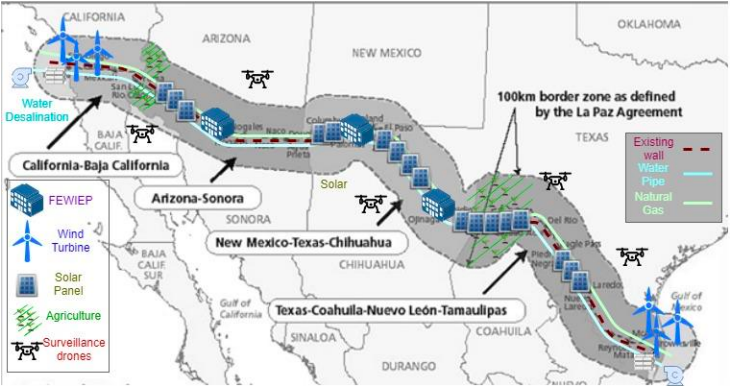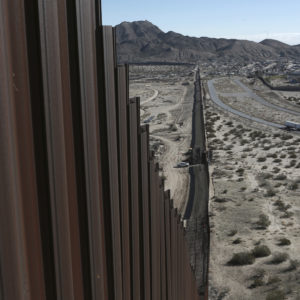Imagine if, instead of building a giant fence along the U.S.-Mexico border, President Trump ordered the construction of nearly 2,000 miles of wind turbines, solar panels, natural gas pipelines and water desalination plants. The industrial corridor would offer both border security and job opportunities for U.S. citizens and migrants seeking a better life — and Mexico might even pay for some of it.
This new “energy park” is a plan that 28 engineers and scientists from across the country delivered to Congress last month, and it’s a plan that could please both Republicans and Democrats. Why not choose a bipartisan option like this one that offers so much more than border security?
High levels of poverty in Latin American countries and lack of affordable and reliable energy resources are what send so many migrants to the border seeking well-paying work and a better life in the first place. Creating opportunity at the border and enhancing the reliability of electricity grids for the region would offer a solution that doesn’t just slap a Band-Aid on the problem, it gets to the root cause.
So how would it all work? The plan asks for $1.1 billion in federal funding to get started. Financing the project would focus on public-private partnerships that would attract private companies to invest during the construction phase and then later for operation. Development of the energy corridor would generate an economic boom and more than pay for itself.
Ronald Adrian, an Arizona State University professor and member of the National Academy of Engineering, says the cost “is tiny compared to the opportunities it creates.”

Graphic Courtesy Future Energy, Water, Industry and Education Park Consortium
The plan also suggests that the mutual benefits between the United States and Mexico would create an opportunity to work closely with the Mexican government for additional financing. President Trump even entertained asimilar idea back in 2017 that involved covering the wall in solar panels to pay for the cost.
This proposal leverages the safest and most environmentally friendly option to enhance energy security: natural gas pipelines. Underground pipes are the absolute safest way to transport natural gas that produces far fewer greenhouse gases than other fossil fuels. This ambitious infrastructure plan is safe and “green,” and if it turns into proposed legislation, the bill should have the support of both conservative and progressive lawmakers.
While some of the proposal’s specifics remain to be seen, an “energy corridor” could address both border security and immigration concerns on a few key fronts.
Mass-scale development of the region could provide a form of border in itself, with new infrastructure acting as a “technological buffer” to bolster traditional fencing. Additionally, these projects could reduce illegal immigration by making water and energy available in previously underserved areas. Last, construction and operation of these projects would create employment opportunities on both side of the border — and thereby obviate the need for illegal immigration attempts.
Some are comparing this massive infrastructure idea to the Roman aqueducts and the transcontinental railroad. It’s an innovative plan that will employ land that is vastly deserted and underused, and not to mention, land that may be sitting on top of untapped natural gas reserves. Making the most of our resources and a smart push toward more renewables is exactly what we need in the 21st century to get us through the next generation of affordable and reliable energy.
More broadly, public-private endeavors of this nature present tremendous opportunities to make the most of our energy resources. Advancing technologies have led to a proliferation of oil and gas development in the United States and beyond. Once we are able to transport those resources safely and efficiently with the right infrastructure in place, the next steps in development will follow, leading to dependable heating, consistent electricity grids, and a better quality of life.
The U.S.-Mexico energy park is one of the few feasible solutions that would actually solve the border security problem and improve our relationship with Latin America. Public-private development between the United States and Mexico offers an incredible economic opportunity at the border, through jobs, trade and increased access to clean and affordable energy for generations to come.

